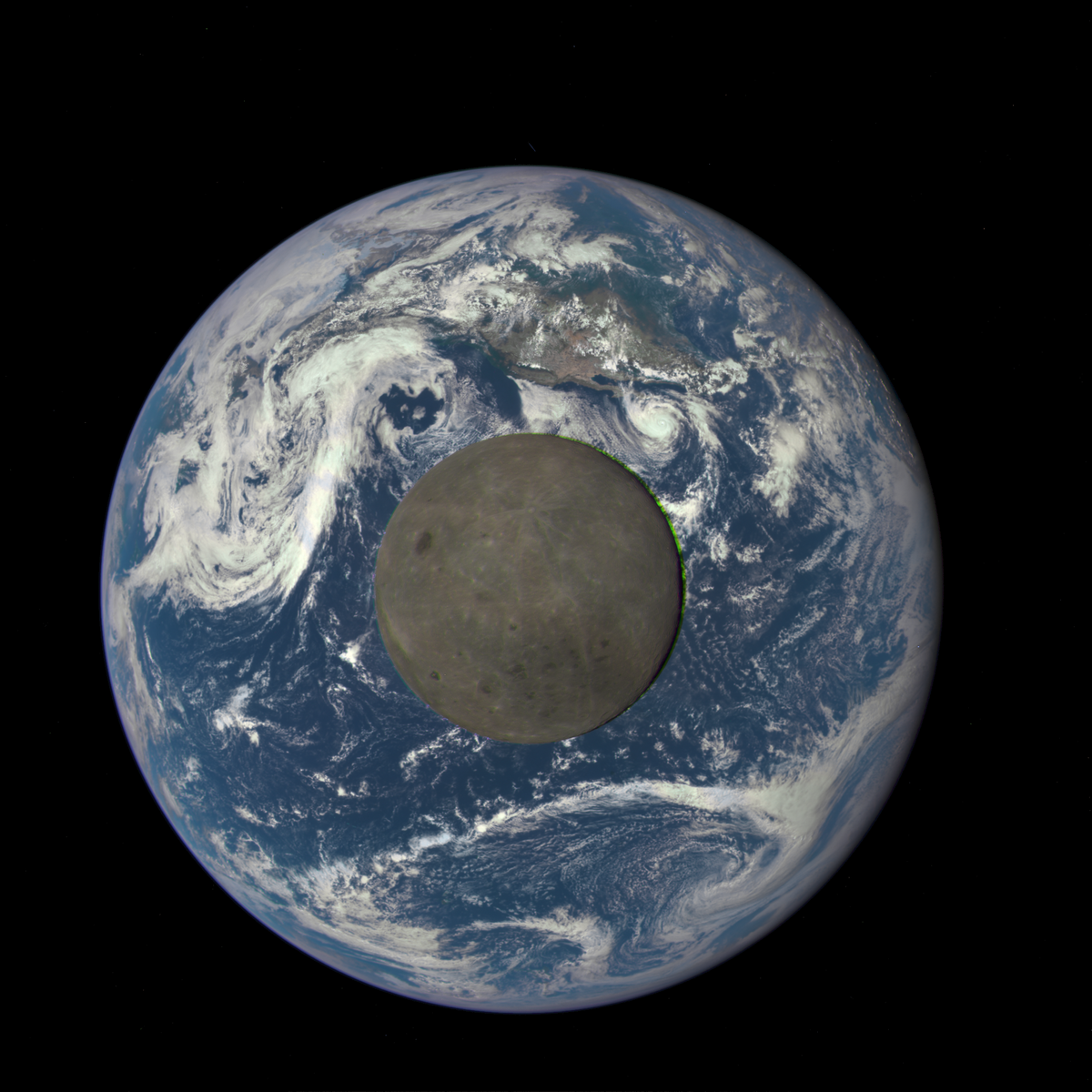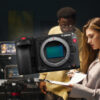Credit: NASA/NOAA
Digital Camera World‘s coverage of NASA‘s rare moon transit photo demonstrates how far space photography has come. Using a modest 4MP CCD camera, the DSCOVR satellite captured a remarkable view of the moon crossing Earth’s face from a million miles away – a testament to how technical precision can overcome seemingly basic equipment.
What makes this image particularly fascinating is the story behind its creation. Ten years after it was taken, this photo from the Deep Sea Climate Observatory (DSCOVR) satellite continues to amaze people online, proving our endless fascination with space photography evolution and cosmic perspectives.
The DSCOVR satellite‘s unique position, sitting between Earth and the Sun about a million miles from our planet, gives it an extraordinary vantage point for this kind of space photography. The satellite’s Earth Polychromatic Imaging Camera (EPIC) only gets two chances per year to capture such images, making each opportunity crucial for the team.
The technical process behind these images is equally impressive. The EPIC camera‘s imaging process combines three separate monochrome exposures with different spectral filters, offering fascinating insights into the complexities of space photography. Not only does it show remarkable results, but it also reminds us that sometimes the most impactful images come from carefully planned technical execution rather than cutting-edge gear.
What’s particularly interesting about this photo is how it captures the “dark side” of the moon – the part we never see from Earth. Since the Soviet Luna 3 spacecraft first photographed it in 1959, our ability to capture and process these images has improved dramatically. This evolution in space photography showcases just how far we’ve come in our ability to document and understand our cosmic neighborhood.
The color composition process is especially intriguing. NASA‘s team explains that they create these “natural color” images by combining three separate exposures taken about 30 seconds apart using red, green, and blue spectral filters. This creates some subtle artifacts in the final image due to the moon’s movement during the sequence, resulting in slight color offsets that add an almost artistic quality to these scientific observations.
Adam Szabó, DSCOVR project scientist at NASA‘s Goddard Space Flight Center, noted something that really puts this image in perspective: “It is surprising how much brighter Earth is than the moon.” This observation reminds us how space photography can challenge our everyday perceptions of our cosmic environment. While we see a bright moon in our night sky, Earth actually reflects much more sunlight, appearing as a truly brilliant object in dark space.
This kind of space photography evolution isn’t just about pretty pictures – it’s crucial for scientific research. The DSCOVR satellite‘s primary mission is monitoring real-time solar winds for the National Oceanic and Atmospheric Administration (NOAA), making these stunning photos a bonus that helps engage the public with space science.
Visit Digital Camera World to read the full story and see how NASA continues to push the boundaries of what’s possible in astronomical photography. For those interested in getting started with astrophotography, the article also includes helpful links to guides about the best cameras and lenses for capturing your own cosmic images.
Best Thing We Read This Week shares photography articles that challenge our perspectives and deepen our understanding of the craft. Have an article to suggest? Share it in the comments below.









